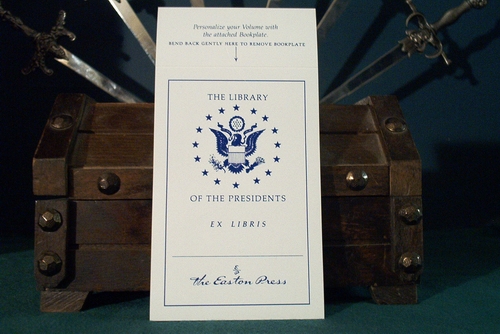About bookplates and the history of bookplates.
Bookplates are labels of ownership, generally engraved or printed, placed on the inside covers of books, and sometimes known as ex-libris (Latin, "from the books of") from the use of those word preceding the owner's name. Bookplates were first used about the middle of the 15th century. Among the best known early examples are those designed and engraved around the beginning of the 16th century by German artist Albrecht Durer. Engraved English bookplates date from the second half of the 16th century. The early designs, beginning with Durer's, contain representations of the heraldic coats of arms of their owners, and are usually described as "armorial". In the 18th century new motifs were introduced, notably landscape drawings and portraits, references to classical allegory, and symbolic representations of pursuits and occupations of the book's owner. Abstract ornamentation also was used, especially in the 19th and 20th centuries. In recent times a number of newer mediums, such as colored etchings, lithographs, and photographs, have been used in bookplate design.
